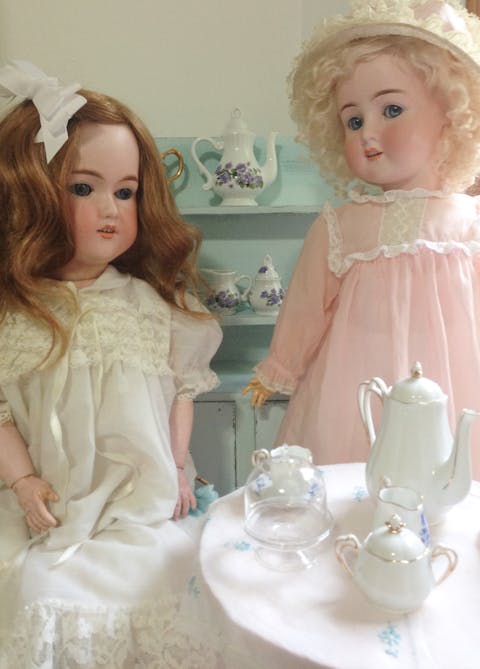Learn About Dolls
While many of us enjoyed dolls as favorite play items of a childhood past, today vintage and antique dolls enjoy the status of highly sought after prizes for adult collectors and enthusiasts.
Assortion of antique dolls
As one of the oldest forms of toys known to mankind, dolls have entertained the masses for millennia and now people are able to appreciate them not only as iconic symbols of nostalgia and sentimentality but also as sources of insight into social history and tradition. We can learn from them the fashions, behaviors, and expectations that were held to their contemporary owners. That being said, it is still nearly impossible not to appreciate the intrinsic sense of fun and pleasure that is integral to the nature of these items. It is no wonder that today there is an increasingly flourishing market for those interested in investing in a piece of reminiscent joy.
Early dolls
Dolls seem to have developed alongside mankind as an intelligent species, serving as a means to cope with the psychological need for children to mimic their adult peers in order to make sense of their surroundings. The oldest doll in the world was found in the grave of a small child in the Siberian region of Khakassia, and dates back to 4,500 BCE. Egyptian wooden paddle dolls date back to the 21st century BCE, and dolls with mobile limbs and removable clothing existed as early as 200 BCE. We know from Ancient Greek stories that little girls of their time were known to enjoy playing with dolls, and many graves of Ancient Roman children have been found to contain such items as well. During these times dolls were made with whatever natural resources were available to the region, such as wood, clay, stone, ivory, bone, leather, or wax. Dolls and stuffed animals made from cloth or textiles likely also existed but due to the high rate of decay of these materials do not survive today.

19th century
While consistently popular throughout the ages, dolls as we know and recognize them today did not come into fruition until the Industrial Revolution. Due to the leaps and bounds in technology, toys as a genre of products became vastly advanced and diversified as middle class children had more leisure time to enjoy as a result of the thriving economy. Porcelain dolls were particularly iconic of the era; German glazed china dolls sold by the millions during the mid 1800’s, and were then later replaced in popularity by bisque dolls, which featured a true skin-like matte finish and delicate face paintings. Their bodies were made from either kid leather, cloth, or composition. Dolls of the 19th century were largely meant to represent adult figures and fashions of the time, but by the turn of the century childlike and baby dolls were a great success and virtually took over the market.
20th century
The 20th century saw the invention of various new materials such as celluloid, polymer, rubber, vinyl, and plastic, and the toy market turned to these mediums in order to produce more dolls at a lower cost. With this in addition to easier manufacturing processes, dolls were able to be mass produced for cheap; now toys were able to find their way into the homes of children across all backgrounds and economic levels, and young girls were encouraged to interact with baby dolls as a means to prepare them for future motherhood. New materials also meant a broader variety and vividity in colors. In 1960, the first realistic black doll became available.
"...Ruth Handler considered that it could be equally important for young girls to have teen or adult figures to emulate during play time."
By the middle of the 20th century, toy manufacturers and doll makers began to become aware of a gap in the market. While fashion dolls resembling adults had been widespread a hundred years before, they had largely grown out of favor in the past decades as emphasis was placed on the importance for young girls to find touch with their maternal instincts. Famously, Ruth Handler considered that it could be equally important for young girls to have teen or adult figures to emulate during play time, and thus Barbie was born in 1959. Barbie was meant to serve as a stylish but wholesome role model for children with her contemporary sense of fashion yet appropriate and likeable character. The company was a huge and immediate success and has since dominated the market for the better part of the past sixty years.
Today’s market
Today any variety of dolls are highly appealing to an equally diverse collector’s market. Whether one is interested in the history and craftsmanship of Victorian porcelain dolls, or finds fascination in the fresh vibrant glamour of 1960’s fashion dolls, there are so many attractive qualities to these items that it is difficult to decide between them. Dolls can not only be pleasant reminders of a bygone time of our lives, or a glimpse into a cultural history, but often as works of art in their own right. It is easy to see why people have found solace in them for so many thousands of years.

